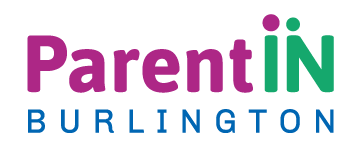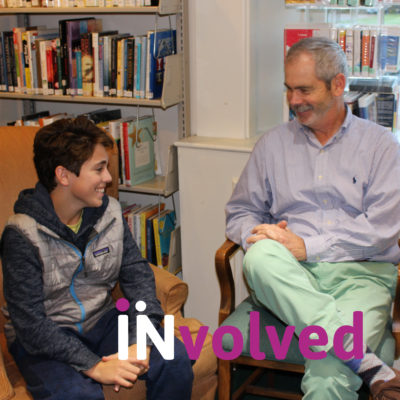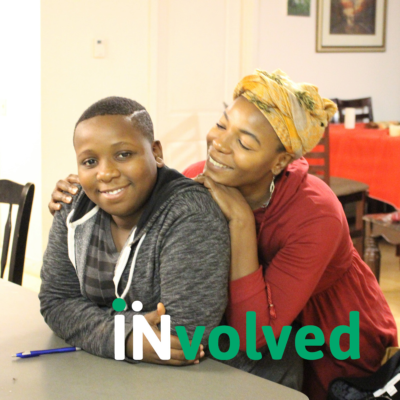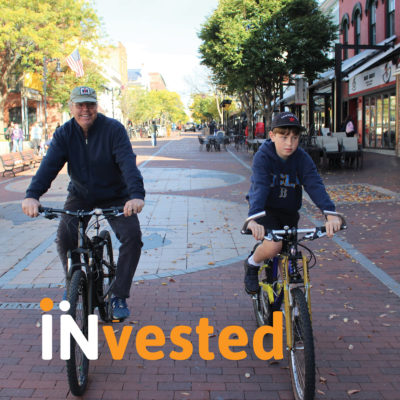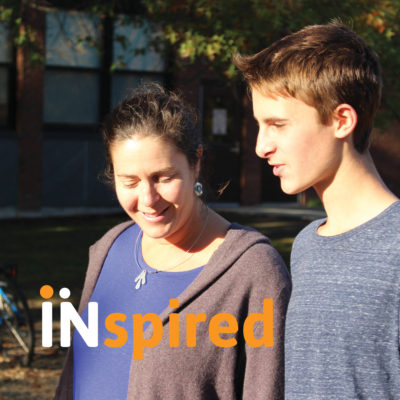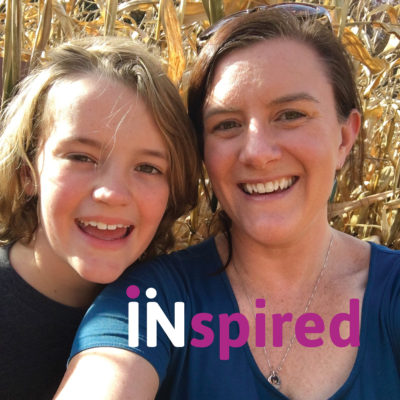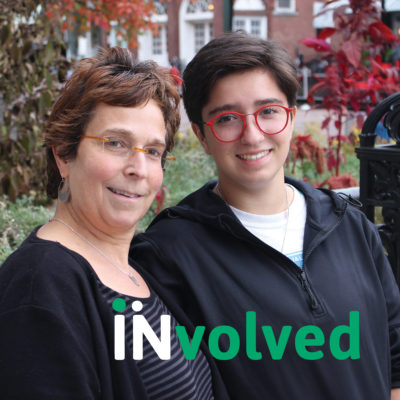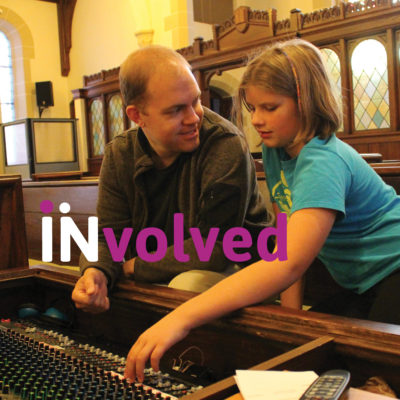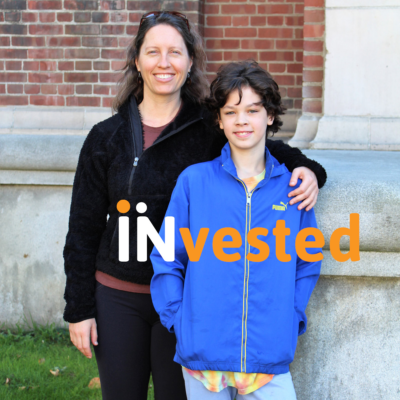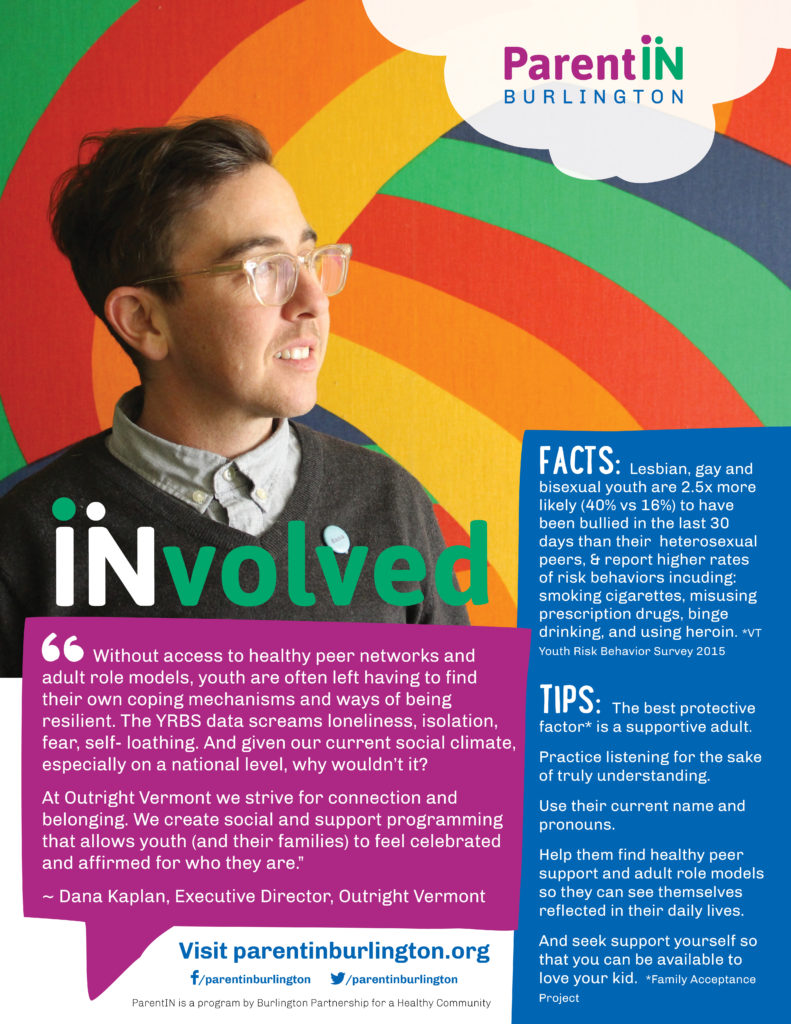
The Vermont Youth Risk Behavior Survey 2015 data shows that youth who identify as lesbian, gay, and bisexual (LGB) are more likely than their heterosexual peers to engage in high risk behaviors, including physical fighting at school, smoking tobacco, drinking alcohol or using other drugs, attempting suicide, and self-harm. LGB youth are 2.5x more likely (40% vs 16%) to have been bullied in the last 30 days than their heterosexual peers.
Being LGB does not cause substance abuse; “minority stress” does. As defined by psychologists, minority stress occurs when a person experiences hardship because of a socially stigmatized identity like LGB. It is important to note, as of the 2015 survey, gender is still not asked in an inclusive way – leaving out transgender students and other gender non-conforming youth.
We asked Executive Director of Outright Vermont, Dana Kaplan, about the high rates of LGB students reporting risk behaviors, and what we as caregivers and community members can do to help.
ParentIN: How do you explain the discrepancy in rates of risk behavior between LGB-identifying youth vs. their heterosexual-identifying peers?
Dana Kaplan: When you don’t see yourself reflected in the culture around you – or worse, you are told that who you are is wrong or somehow broken – it’s an extremely isolating and traumatic place to be. For folks living at the margins of social identities, be it sexuality, gender, race, class, ability, or any combination thereof, the default is that this world is not made to include you, that the systems we have set up do not include you. For LGBTQ+ youth, who are also often fighting against the intersecting system of ageism, it can be difficult to have your identity validated and respected, let alone affirmed. I think there is this sense that youth are too young to know who they are and that adults often know better. Without access to healthy peer networks and adult role models, youth are often left having to find their own coping mechanisms and ways of being resilient. The YRBS data screams loneliness, isolation, fear, self- loathing. And given our current social climate, especially on a national level, why wouldn’t it?
ParentIN: What does your organization do to address these issues?
Dana Kaplan: At Outright Vermont we strive for connection and belonging. We build peer support networks with youth so they can find their communities of similar individuals who ‘get it.’ We create social and support programming that allows youth (and their families) to feel celebrated and affirmed for who they are. It’s both simple and radical – we believe that youth know best who they are and what they need, we understand that gender and sexuality are fluid and that binary structures limit us all, and we create a climate and culture that honors the beautiful complexity of folks’ identities. We mobilize statewide efforts to enhance positive youth leadership development because we believe that all youth deserve to feel empowered to create change in their local communities. We also offer statewide professional development – consults and workshops – for individuals, groups, and organizations that work with youth, because we understand that to build safe, healthy, and supportive environments for queer, trans, and questioning youth, we must also improve the systems with which youth interact.
ParentIN: What can parents and caregivers of LGB identifying youth do to reduce risk taking behavior?
Dana Kaplan: The simplest – and not always easy – answer here is to be accepting and supportive of your youth. Practice listening for the sake of truly understanding. Use their current name and pronouns. Help them find healthy peer support and adult role models so they can see themselves reflected in their daily lives. And seek support yourself so that you can be available to love your kid. The best protective factor, according to the Family Acceptance Project, is a supportive adult.
ParentIN: What can communities and schools do to address this discrepancy?
Dana Kaplan: Four things create safe and heathy schools across gender and sexuality lines – inclusive curriculum, enumerated inclusive policies at the local and state level (including school handbook), professional development for staff, faculty, and administration, and Gender and Sexuality Alliance (GSA) Clubs for students. Invite guest speakers, show films, host book readings and dialogue nights so that folks can hear and see themselves reflected in the culture of what’s going on. Make sure there are gender neutral bathrooms, that forms are inclusive, and that proper reporting is followed in the event of bullying and harassment. One’s inner most sense of belonging is the best suicide prevention. Make it so that youth, regardless of their identity, belong.
ParentIN: What changes in the results from the 2017 YRBS are you anticipating?
Dana Kaplan: The 2017 data now includes a demographic question about gender identity and specifically trans experience. This is critical data that we need to paint a more accurate picture of LGBTQ+ youth lives in Vermont. While I of course hope that some trends have shifted for the better, I also know that (national) social policy impacts lived experiences, which means that hate-based behavior – intolerance in the form of racism, classism, transphobia, homophobia and beyond – is at an all-time high. I am not expecting to see any major shifts in the above statistics currently.
For more information and resources visit: http://www.outrightvt.org/
